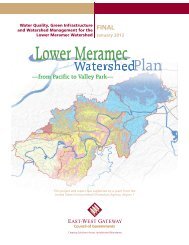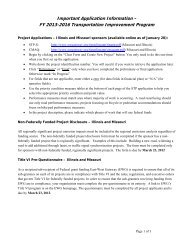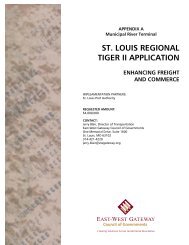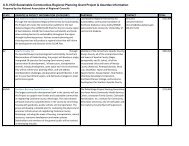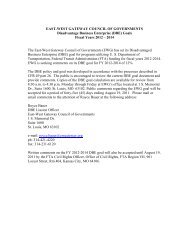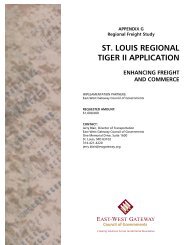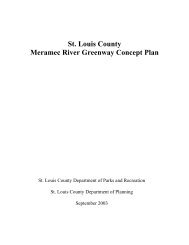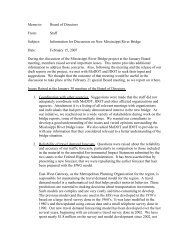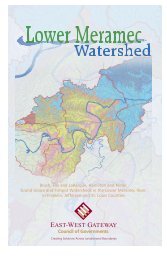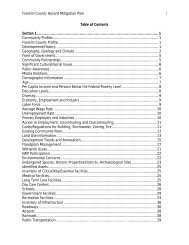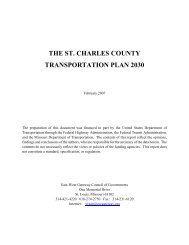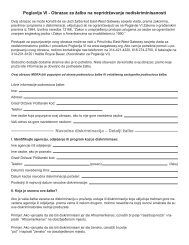Jefferson County - East-West Gateway Coordinating Council
Jefferson County - East-West Gateway Coordinating Council
Jefferson County - East-West Gateway Coordinating Council
You also want an ePaper? Increase the reach of your titles
YUMPU automatically turns print PDFs into web optimized ePapers that Google loves.
A Regional Overview All-Hazard Mitigation Plan 85<br />
Intensity or Strength<br />
The Palmer Drought Severity Index can be utilized to determine the intensity or strength of<br />
droughts. Table J45 above lists the average monthly Palmer Drought Severity Index from<br />
1895 to 1995 for Regions 2 (St. Louis City, St. Louis <strong>County</strong>, St. Charles <strong>County</strong>, Franklin<br />
<strong>County</strong>) and 5 (<strong>Jefferson</strong> <strong>County</strong>).<br />
Lives Lost, Injuries, Property Damage, Economic Losses/Other Losses<br />
The drought of 1988-89 cost the U.S. an estimated $39 billion. To provide perspective,<br />
estimated damages of the record flood of 1993 were in the range of $12-$16 billion. The<br />
social and economic costs of drought are substantial. Given the extent to which the U.S.<br />
relies on acceptable water supply for health and well- being, the need for advanced<br />
drought planning is obvious.<br />
Although the 1988–89 drought was the most economically devastating disaster in the<br />
history of the United States (Riebsame et al., 1991), a close second is undoubtedly the<br />
series of droughts that affected large portions of the United States in the 1930’s.<br />
Determining the direct and indirect costs associated with this period of droughts is a<br />
difficult task because of the broad impacts of drought, the event’s close association with<br />
the Great Depression, the fast revival of the economy with the start of World War II, and<br />
the lack of adequate economic models for evaluating losses at that time. However, broad<br />
calculations and estimates can provide valuable generalizations of the economic impact of<br />
the 1930s drought. In 1937, the Works Progress Administration (WPA) reported that<br />
drought was the principal reason for economic relief assistance in the Great Plains region<br />
during the 1930s (Link et al., 1937). Federal aid to the drought-affected states was first<br />
given in 1932, but the first funds marked specifically for drought relief were not released<br />
until the fall of 1933. In all, assistance may have reached $1 billion (in 1930s dollars) by the<br />
end of the drought (Warrick et al., 1980).



